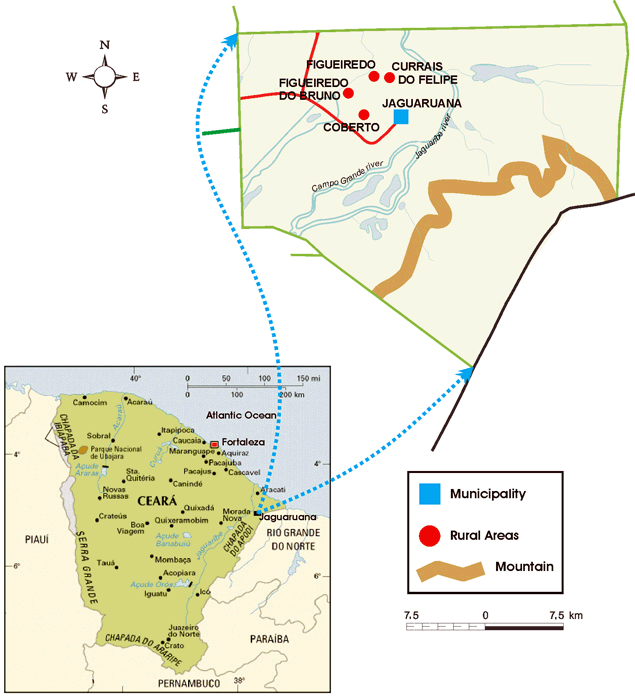In order to assay the triatomine infestation and domiciliation in the rural area of Jaguaruana district, state of Ceará, Brazil, we studied, from November 2000 to April 2002, 4 localities comprising 158 domiciles as a whole, with an average of 4 inhabitants/house, who are dwelling in there for more than 7 years. Most houses have tile-covered roofs and the walls built with plaster-covered bricks (57%), followed by bricks without plaster (33%), and mud walls (7.5%). A total of 3082 triatomines were captured from different locations, according to the following capture plan: (a) intradomiciles: 238 Triatoma brasiliensis, 6 T. pseudomaculata, 9 Rhodnius nasutus, and 2 Panstrongylus lutzi; (b) peridomiciles (annexes): 2069 T. brasiliensis, 223 T. pseudomaculata, 121 R. nasutus, and 1 P. lutzi; (c) wild, in carnauba palms (Copernicia prunifera): 413 R. nasutus. From the captured triatomines, 1773 (57.5%) were examined. The natural index of Trypanosoma cruzi infection ranged from 10.8% to 30.2% (average of 17%), depending on the species and the location from where the triatomines were captured.
epidemiology; infestation index; natural infection; Triatoma brasiliensis; Triatoma pseudomaculata; Rhodnius nasutus; Panstrongylus lutzi; Ceará; Brazil







